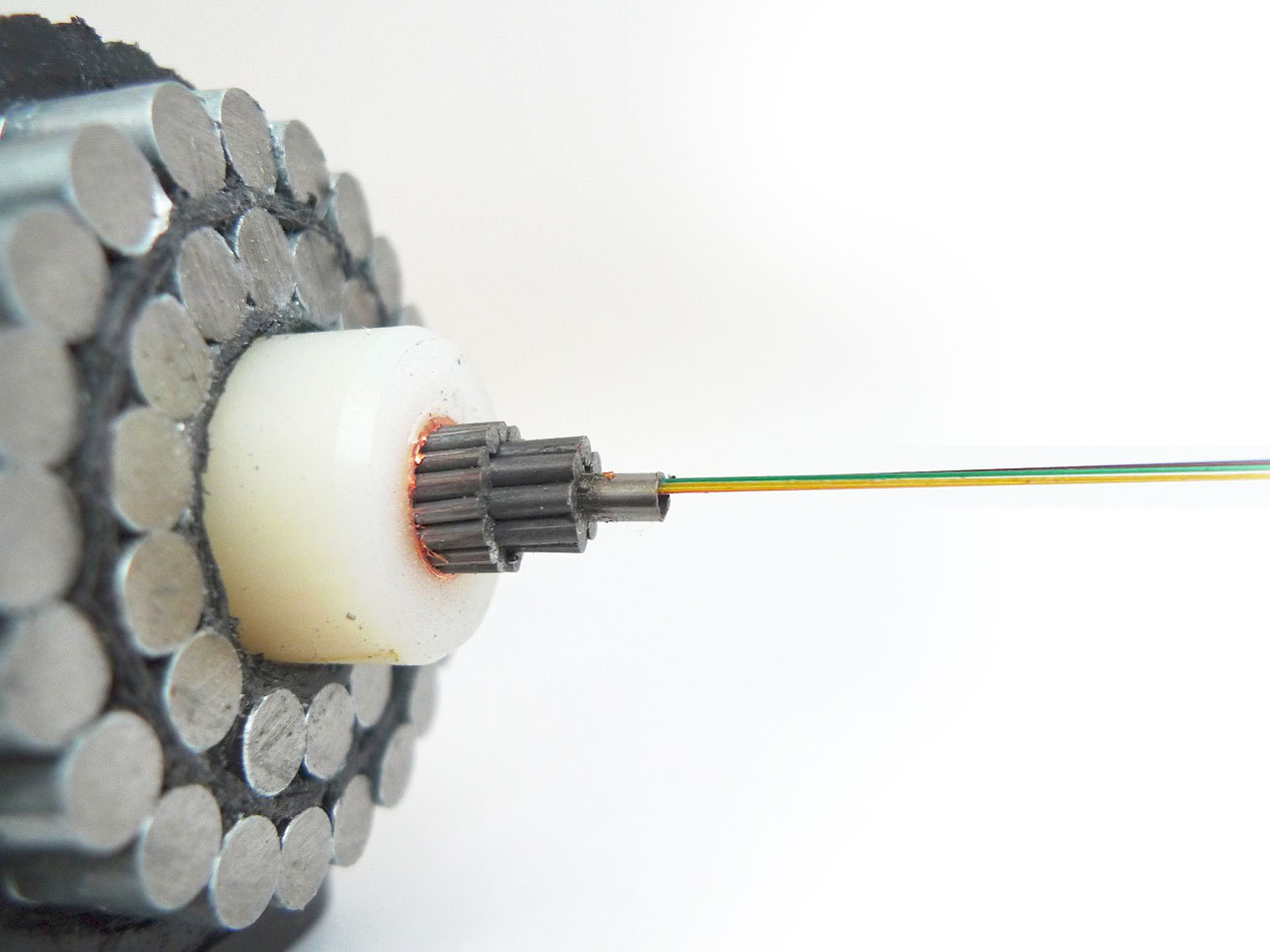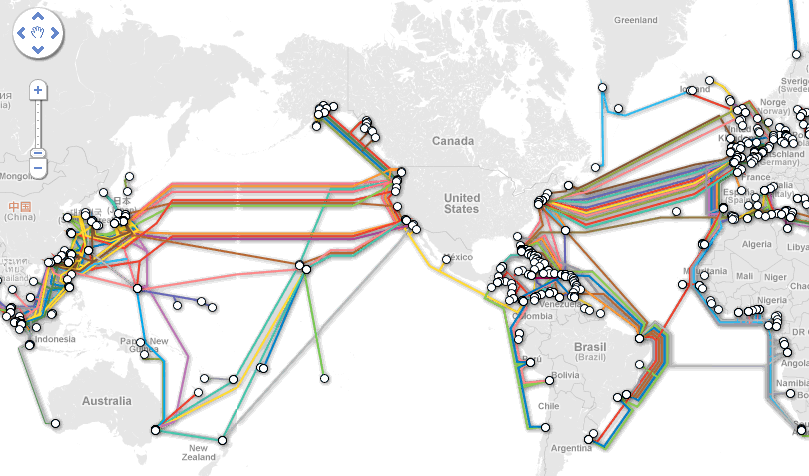With thousands of satellites in orbit communicating with us at the speed of light, 99% percent of international data is transmitted by cables crisscrossing the bottom of our oceans. In total, there are hundreds of thousands of miles of both copper and fiber-optic cables currently on the ocean floor. While transmitting information via satellite may seem much easier and more reliable than undersea cables, fiber optic cables deliver information at a much lower cost than our most advanced satellites today.
In shallow waters, voice and data transmission cables are buried beneath the ocean floor using high pressure water jets to dig trenches. In deeper water, where the environment is more stable, they are typically laid on top of the ocean floor, with care taken to avoid coral reefs, sunken ships, and other potentially damaging obstructions. There is one underwater hazard that wasn’t originally seen as a danger to underwater communications but has proven to cause millions of dollars in damage to undersea fiber optic lines – sharks.
Reports of sharks biting undersea cables date back to 1987. It was then that the New York Times reported “sharks have shown an inexplicable taste for the new fiber-optic cables that are being strung along the ocean floor linking the United States, Europe, and Japan.”
AT&T also encountered problems after they laid a trial optical cable, TAT-8, in the Canary Islands in 1983. This cable did not have an electrical screen and was attacked by sharks. It was never proved whether these attacks were due to the sharks sensing the electrical radiation from the cable or the vibration of the cable moving on the sea floor where it might have been suspended. TAT-8 did have the screen conductor because of the possible effect of shark attacks. Because the cable was the first fiber optic cable and not coaxial cable, the electrical interference shielding for the high voltage supply lines was removed. This removal did not affect the fiber, but it did cause feeding frenzies in sharks that swam nearby. The sharks would then attack the cable until the voltage lines killed them. This caused numerous, prolonged outages. Eventually, a shark shielding was developed for the cable. PTAT-1, the next cable to go in the Atlantic was put in with the shark shielding and it proved much more reliable than TAT-8.
Here’s a look at one such shark who is having a taste of the internet:
The first conclusive evidence of sharks’ attraction to fiber optic cables was found in 1985, when shark teeth were the found embedded in an experimental data line off the Canary Islands. That same year, shark bites caused the failure of four segments of cable in the Atlantic ocean, raising curiosity as to why it may be happening.
The website oAfrica, which tracks digital news on the continent, theorized in 2009 that the emission of electricity from the fiber cables may attract the sharks, who mistake the currents for prey.
“Unlike short-haul terrestrial fiber cables or old copper cables where the fiber did not emit noticeable fields, undersea cables must carry high voltage power to the undersea repeaters, which result in both electric and magnetic fields around and along the cable … Some sharks mistaken the electric fields for distressed fish and attempt to feed on the cable.”
Dr. Chris Lowe, one of the founders of the Shark Lab at California State University, Long Beach believes that sharks bite the cables for a different reason, and told Wired that sharks may just be curious about the cables. “If you had just a piece of plastic out there shaped like a cable, there’s a good chance they’d bite that too,” said Dr. Lowe in the interview.
Being curious creatures, t’s a theory that makes sense. And sharks have been seen biting buoy lines, anchor lines, tires, and just about anything else in their environment.
Whether through natural curiosity or in search of a meal, Google is attempting to prevent damage to their cables, and for good reason – they currently own over 100,000 miles of private fiber optic routes around the world, including 5,000 miles fiber-optic cables spanning the Pacific.
Dan Belcher, a product manager on the Google cloud team, said that Google goes to great lengths to protect its infrastructure, including wrapping its trans-Pacific underwater cables in Kevlar to prevent against shark attacks and other damage.
In South Africa, the results of the testing showed that the layers of 0.15 millimeter steel and a high density 0.05 millimeter polyethylene jacket protect that insulation from shark attack. Generally, sharks do not feed below 1,500m, so only cables shallower than this depth need extra reinforcement.
But are sharks really the threat they’re made out to be? The International Cable Protection Committee (ICPC) doesn’t seem to think so, and it’s likely that once again, sharks aren’t the villains they’re made out to be.
“The International Cable Protection Committee (ICPC) has reviewed records of cable faults worldwide, and together with an assessment of the video, conclude that much of the media hype was incorrect. Essentially, sharks and other fish were responsible for less than one percent of all cable faults up to 2006. Since then, no such cable faults have been recorded,” the group said in a message.
The group also said that “expert advice suggests the cable was attacked by a six-gill, blunt nose shark (Hexanchus griseus), which took one bite and swam away. The cable sustained no obvious external damage and is unlikely to have suffered internal damage.”
A look at the damages to undersea cables shows that most threats to cables, however, do not come from apex predators at all. 70 percent of undersea cable faults are caused by ship anchors and fishing trawlers that inadvertently snag a cable, with another 10-15 percent of damage from natural disasters like earthquakes, underwater landslides, or tidal currents dragging lines underwater. Most undersea data connections have redundancy built into them to help avoid outages, however even the most minor repairs can cost millions of dollars and result in network slowdowns.
Story submitted by Charles Halter
Independent contributor
.


